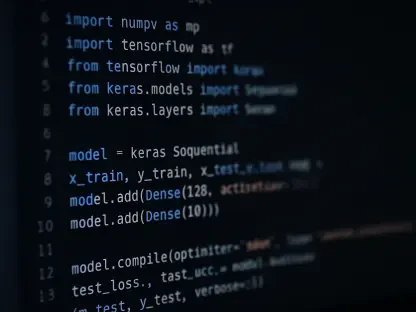In the fast-evolving world of technology, the introduction of low-code/no-code solutions has become increasingly prevalent, democratizing software development and empowering users without deep coding knowledge to build their applications. Among these tools, Canva Code, introduced this year, marks an intriguing entry into the realm of AI-assisted web design and front-end development. Competing with tech giants like Google, OpenAI, and Meta, Canva Code seeks to bring creativity and simplicity to the process of creating visually compelling web designs. This review delves into its groundbreaking features and examines its performance in this competitive technological landscape.
Exploring Canva Code’s Key Features
User-Centric Design Experience
Canva Code places significant emphasis on user interface and experience design, offering an intuitive and accessible platform suitable for both novice and seasoned users. The tool manifests a user-centric approach, ensuring that navigation is straightforward and engaging. Although the feature’s placement is not immediately apparent, once accessed, the seamless integration of recognition within Canva’s design ethos provides an enriched user experience. This ease of access boosts user engagement and satisfaction, making the design process more rewarding.
Unmatched Visual Design Capabilities
At its core, Canva Code is crafted to produce visually stunning layouts. Its capacity for crafting aesthetically pleasing designs distinguishes it from competitors, delivering layouts that demonstrate remarkable attention to detail. From harmonizing font selections to seamlessly integrating on-page elements, Canva Code excels in creating polished, professional-looking web designs. This deeply-rooted focus on visual appeal renders the tool ideal for users prioritizing design aesthetics over intricate technical functionalities.
Seamless Brand Integration
Capitalizing on Canva’s established ecosystem, Canva Code allows for seamless integration of brand elements such as logos, color schemes, and imagery, thus facilitating brand-aligned project creation for enterprise users. This feature simplifies the production of cohesive brand expressions without necessitating manual efforts or third-party tools. Enterprises, therefore, benefit from streamlined design processes that align intuitively with brand guidelines, enhancing project consistency, especially in brand-centric undertakings.
Continuous Developments and Emerging Trends
With new features and updates being regularly integrated, Canva Code offers a glimpse into the ever-expanding capabilities of low-code/no-code tools. These advancements are attuned to current technological trends and user demands, allowing Canva Code to maintain relevance and a competitive edge in a dynamic technological landscape. As other low-code platforms evolve concurrently, understanding these developments sheds light on Canva Code’s positioning and potential growth trajectory.
Industry Applications and Innovative Use Cases
Canva Code has gained traction across various industries, with significant applications noted in the marketing, advertising, and design sectors. For instance, professionals employ Canva Code to design visually engaging landing pages, informative dashboards, and eye-catching portfolio websites. Unique use cases span beyond traditional web design, leveraging the tool for spontaneous creative projects that require visually captivating presentations achieved swiftly.
Addressing Challenges and Boundary Limits
Despite its stellar visual output, Canva Code encounters several technical challenges, most notably the absence of backend support and the lack of direct code editing capabilities. Such limitations make translating complex creative visions into executed digital designs less fluid for users preferring granular control over code. Additionally, the verbosity of the generated code can occasionally lead to performance inefficiencies, though it generally remains manageable within simpler project scopes.
Setting the Stage for Future Developments
As Canva Code continues to make its presence felt in the realm of web design, future enhancements are anticipated to address existing limitations. Prospects such as enabling backend integration or offering more advanced editing capabilities could bolster its usability for more complex applications. Such advancements would not only broaden its appeal but could also redefine the way users approach digital design and creativity, thus influencing its ongoing evolution and widespread adoption.
Final Thoughts
Canva Code has entrenched itself as a formidable solution in design-focused front-end development arenas, delivering unparalleled ease of use and visual sophistication. While limitations relating to backend functions and code flexibility were found, its primary appeal lies in quickly achieving visually compelling outcomes for users without extensive coding knowledge. As it continues to adapt and evolve, Canva Code holds promise for further innovation in creative digital spaces, potentially transforming the web development landscape by lowering barriers and expanding access.









